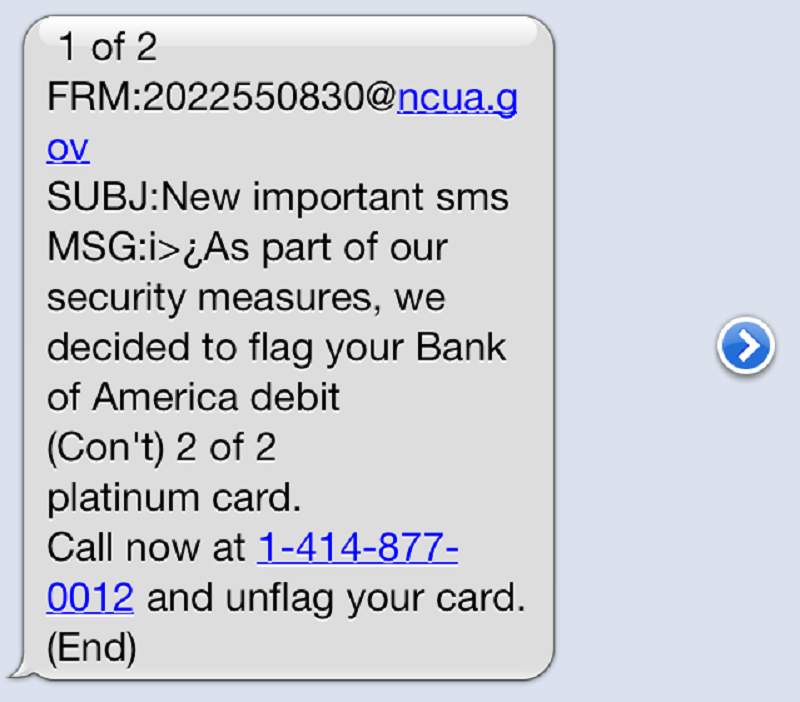 These days, it seems like scammers are everywhere. They are sending emails to your accounts, calling on your phone, texting you out of the blue – all the while trying to trick you out of your money. Every week, there is a new scheme on the news that people have fallen victim to and in some cases, the victims lose everything. Fortunately, there are ways to identify a scam before you become a victim. One of those ways is being able to recognize the fraud triangle. Here is how to use the fraud triangle to avoid scams.
These days, it seems like scammers are everywhere. They are sending emails to your accounts, calling on your phone, texting you out of the blue – all the while trying to trick you out of your money. Every week, there is a new scheme on the news that people have fallen victim to and in some cases, the victims lose everything. Fortunately, there are ways to identify a scam before you become a victim. One of those ways is being able to recognize the fraud triangle. Here is how to use the fraud triangle to avoid scams.
What Is the Fraud Triangle?
The fraud triangle describes a scam committed by generally honest, trustworthy people that find themselves with the opportunity to enrich themselves at the expense of others and are unable or unwilling to avoid the temptation. These frauds are generally composed of three elements: Motivation to perform or upgrade, Opportunity to take advantage of a situation, and Rationalization of the activity as okay because of the circumstances the fraudster finds themselves in. These types of fraudulent activities can go on for years without detection because the fraudster does not act suspicious and may have been trustworthy for a significant period of time before the fraudulent activities begin.
Knowing how the fraud triangle works helps you understand the mindset of the person committing the fraudulent acts. Knowing what motivates these people and how to prevent their activities from going undetected can limit the financial impact of the fraud and remove these people from positions of trust before they cause considerable or irreparable damage.
How To Use the Fraud Triangle To Avoid Scams
The best way to use the fraud triangle to avoid scams is to take away one of the legs of the triangle, without which the rest of the fraud cannot stand. The easiest leg to take away is the Opportunity leg. In most cases, these types of scams happen because someone saw an opportunity and had the knowledge to take advantage of it without anyone else knowing what they are doing. Remove the opportunity and you remove the ability to conduct the scam.
One of the simplest ways to reduce opportunity for fraud is to implement a system of checks and balances in your business or your life. For a business, routine audits by an independent third-party auditor could be enough to convince potential fraudsters that they will be caught quickly if they mess with the company’s financial information or inventory. For your personal life, keep track of your assets and regularly go over financial information to ensure that nothing suspicious is going on.
If the conducted reviews uncover anything that seems out of the ordinary, do not wait to act. Find out where the issue is occurring and take steps to remedy the situation as quickly as you can. In many cases, you may find that the issue is the result of a genuine mistake and correcting the mistake resolves the issue. In a few cases, you might find an actual scam in the beginning stages of being implemented and stamping it out fast can save you and/or your business a significant amount of money.
Conclusion
While the fraud triangle is not a new concept, it is getting more attention these days as scams seem to be becoming more common in all areas of our lives. Billions of dollars are lost to scammers each year and getting restitution can take a long time, if it is ever received at all. By understanding the mindset of a person willing to commit fraud, we can reduce the risk of ourselves or others becoming victims and potentially save someone from going down the path to criminal activity.
Don’t Fall for These 3 Types of Food Delivery Scams
Top 3 States With the Highest Scam Rate
6 Most Painful Financial Scams Experienced by Celebrities

Toi Williams began her writing career in 2003 as a copywriter and editor and has authored hundreds of articles on numerous topics for a wide variety of companies. During her professional experience in the fields of Finance, Real Estate, and Law, she has obtained a broad understanding of these industries and brings this knowledge to her work as a writer.






